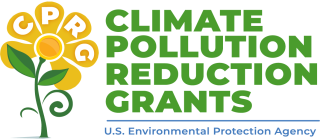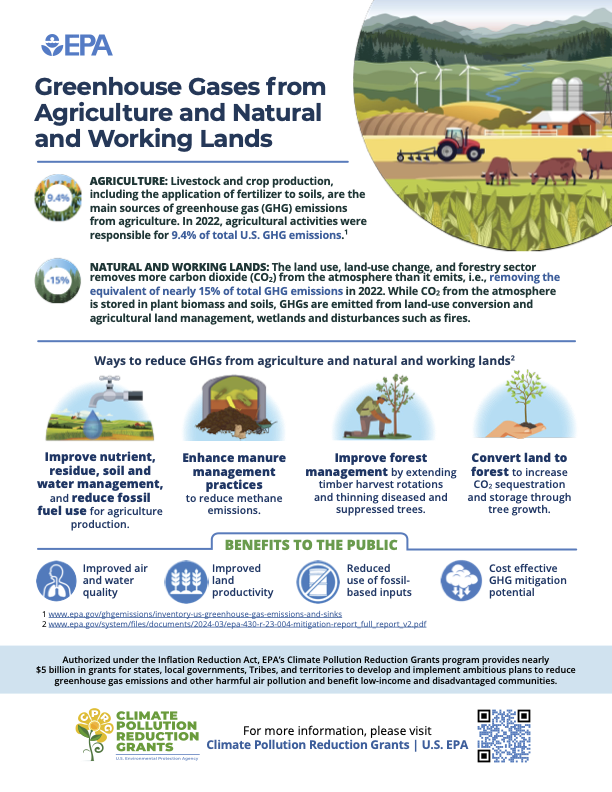CPRG Selected Applications by Sector - Agriculture and Natural and Working Lands

Agriculture: Livestock and crop production, including the application of fertilizer to soils, are the main sources of greenhouse gas (GHG) emissions from agriculture. In 2022, agricultural activities were responsible for 9.4% of total U.S. GHG emissions.
Natural and Working Lands: The land use, land-use change, and forestry sector removes more carbon dioxide (CO2) from the atmosphere than it emits, i.e., removing the equivalent of nearly 15% of total GHG emissions in 2022. While CO2 from the atmosphere is stored in plant biomass and soils, GHGs are emitted from land-use conversion and agricultural land management, wetlands and disturbances such as fires.
The following selected applications include proposed projects in the agriculture and natural and working lands sector:
General Competition Selections
- Central Midlands Council of Governments (South Carolina)
- City of New Orleans (Louisiana)
- Cuyahoga County (Ohio)
(Coalition Members: City of Cleveland, City of Painesville) - Illinois Environmental Protection Agency
- Metroplan (Arkansas)
(Coalition Members: City of Fort Smith, Northwest Arkansas Regional Planning Commission) - Minnesota Pollution Control Agency
- Montana Department of Natural Resources and Conservation
- Nebraska Department of Environment and Energy
- North Carolina Department of Natural and Cultural Resources
(Coalition Members: South Carolina Office of Resilience, Maryland Department of the Environment, Virginia Department of Wildlife Resources)
Tribes and Territories Competition Selections
- Blue Lake Rancheria
- Nez Perce Tribe
- Nottawaseppi Huron Band of Potawatomi
- Salt River Pima-Maricopa Indian Community
- The Snoqualmie Indian Tribe
- Tule River Economic Development Corporation

View or download the CPRG Sector Infographic - Agriculture and Natural Working Lands (pdf) or view the text version.
About Climate Pollution Reduction Grants
Authorized under the Inflation Reduction Act, EPA’s Climate Pollution Reduction Grants program provides nearly $5 billion in grants for states, local governments, Tribes, and territories to develop and implement ambitious plans to reduce greenhouse gas emissions and other harmful air pollution.
